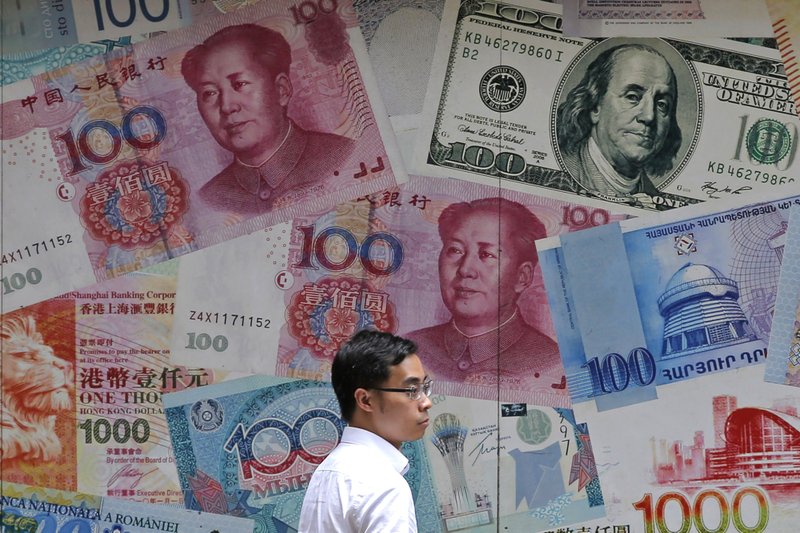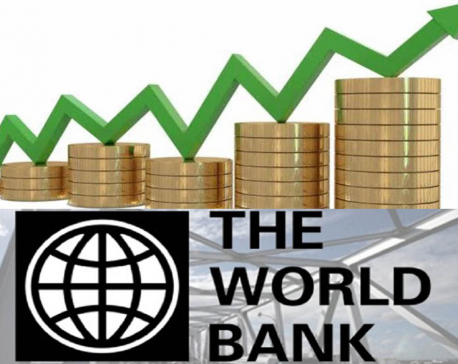
OR
China’s yuan falls below sensitive level of 7 to US dollar
Published On: August 5, 2019 11:30 AM NPT By: Associated Press

BEIJING, Aug 5: China’s central bank allowed its yuan to fall below the politically sensitive level of seven to the U.S. dollar on Monday, possibly adding to trade tension with Washington.
The currency weakened to 7.0240 by late morning following President Donald Trump’s threat last week of tariff hikes on additional Chinese imports in a fight over Beijing’s trade surplus and technology policies.
Yuan weakness is among a series of U.S. complaints that are fueling tension with Washington. American officials complain a weak currency makes China’s exports too inexpensive, hurting foreign competitors and swelling Beijing’s trade surplus.
China’s central bank sets the yuan’s exchange rate each morning and allows it to fluctuate by 2 percent against the dollar during the day. The central bank can buy or sell currency — or order commercial banks to do so — to dampen price movements.
The bank “likely sees no urgent need” to keep the yuan stable “and 7 is no longer a line of defense,” said Stephen Innes of VM Markets in a report.
The level of seven yuan to the dollar has no economic significance, but could revive U.S. attention to the exchange rate.
The central bank blamed the decline on “unilateralism and trade protectionism measures,” a reference to Trump’s tariff hikes. But it tried to play down the significance of “breaking seven.”
“It is normal to rise and fall,” said a central bank statement.
Trump’s tariff hikes have put downward pressure on the yuan by fueling fears economic growth might weaken.
The U.S. Treasury Department declined in May to label China a currency manipulator but said it was closely watching Beijing.
Chinese leaders have promised to avoid “competitive devaluation” to boost exports by making them less expensive abroad. But regulators are trying to make the state-controlled exchange rate more responsive to market forces, which are pushing the yuan lower.
The yuan, also known as the renminbi, or “people’s money,” has lost 4 percent since hitting a high in February of 6.6862 to the dollar.
That helps exporters cope with tariffs of up to 25 percent imposed by Trump on billions of dollars of Chinese goods. But it raises the risk of inflaming American complaints.
Trump rattled financial markets Thursday by announcing plans for 10% tariffs on an additional $300 billion of Chinese goods, effective Sept. 1. That would extend penalty duties to almost all U.S. imports from China.
The Treasury report in May urged Beijing to take steps “to avoid a persistently weak currency.”
A weaker yuan also might disrupt Chinese efforts to shore up cooling economic growth. It would raise borrowing costs by encouraging an outflow of capital from the world’s second-largest economy.
The central bank tried to discourage speculation last August by imposing a requirement that traders post deposits for contracts to buy or sell yuan. That allows trading to continue but raises the cost.
Beijing imposed similar controls in October 2015 after a change in the exchange rate mechanism prompted markets to bet the yuan would fall. The currency temporarily steadied but fell the following year.
You May Like This

UML leader Basnet to Balen: Don't be pampered just because you have a few hundred fans on Facebook
KATHMANDU, August 26: While the Mayor of Kathmandu Metropolitan City (KMC), Balendra Shah, is speeding up the work to demolish... Read More...

Complete education, full health could double Nepal's GDP per capita: WB
KATHMANDU, June 7: Nepal has the potential to double its Gross Domestic Product (GDP) per capita in the long run if... Read More...

Smugglers’ go-downs near customs office
SIRAHA, March 16: On March 10, a team from the District Police Office (DPO), Siraha, arrested a truck with an... Read More...





Just In
- Power supply to be affected in parts of Kathmandu Valley today as NEA expedites repair works
- Godepani welcomes over 31,000 foreign tourists in a year
- Private sector leads hydropower generation over government
- Weather expected to be mainly fair in most parts of the country today
- 120 snow leopards found in Dolpa, survey result reveals
- India funds a school building construction in Darchula
- Exploring opportunities and Challenges of Increasing Online Transactions in Nepal
- Lack of investment-friendly laws raises concerns as Investment Summit approaches







_20220508065243.jpg)






Leave A Comment